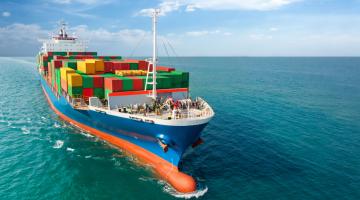
For the better part of the last two years, we have heard about supply chain challenges faced by retailers and other businesses. These challenges have not been limited to the United States. Since the supply chain is global in nature, they have extended around the world and impacted everything from computer chips to toilet paper to patio furniture.
Many of these supply chain challenges existed prior to COVID-19, but they have been exacerbated by the pandemic amid increased consumer demand and the shift in buying from services to goods.
After a surge in import volumes that continued through the first half of 2022 as retailers worked to meet demand, imports have finally started to trail off as we enter the fourth quarter.
Learn more about the latest updates in the retail supply chain.
The questions are whether this cooling off of imports means a change in the economy and consumer behavior and whether the supply chain will get a chance to catch up and get back to normal.
First, let’s be clear about the cooling off. According to NRF’s latest Global Port Tracker report, imports at the nation’s major container ports are expected to fall to their lowest level in nearly two years by the end of 2022 even as retail sales continue to grow. Import volumes for the first half of the year saw a 5.5% year-over-year increase, totaling 13.5 million Twenty-Foot Equivalent Units (one 20-foot container or its equivalent). The forecast for the second half of the year is an additional 12.5 million TEU, down 4% year-over-year. However, for the full year, 2022 is expected to total 26 million TEU, up 0.7% from last year’s annual record of 25.8 million TEU.
So, despite the end-of-year slowdown, we still expect to set a record for import volume. Much of this is due to ongoing consumer demand, with retail sales up 7.2% during the first nine months of the year.
There are several reasons why we are now seeing lower import numbers. First and foremost, retailers planned ahead for the busy holiday season, with many bringing in products earlier than normal to avoid ongoing supply chain disruptions. Many also shifted away from West Coast ports because of the significant congestion issues there and labor negotiations that have left the International Longshore and Warehouse Union working without a contract since July 1. The parties continue to negotiate, and cargo continues to flow, but concerns about potential disruption continue.
The ILWU contract is not the only supply chain labor issue of concern. In September, the nation was on the edge of a potential strike that would have shut down the entire freight rail system. While the parties finally came to an agreement on a tentative contract, it is now up to the 12 individual railroad unions to ratify the agreement. To date, six have ratified the agreement while one has rejected it. Despite the rejection, railroads continue to operate as the parties work to address concerns and schedule a new ratification vote.
Labor isn’t the only issue affecting the rails. Strong volumes coming through the ports have stressed rail yards as they deal with increased volumes and lack of equipment, including chassis needed to carry containers.
There are also concerns with the next wave of COVID-19 outbreaks and what they could mean for supply chain operations. China’s continuing “zero-COVID” shutdown policy remains a concern if it results in a shutdown of manufacturing or Chinese ports.
As we plan ahead, we need to continue to address the gaps in infrastructure, equipment, labor and information sharing that have impacted supply chain operations. Without doing so, we won’t be sufficiently prepared for the next disruption.


